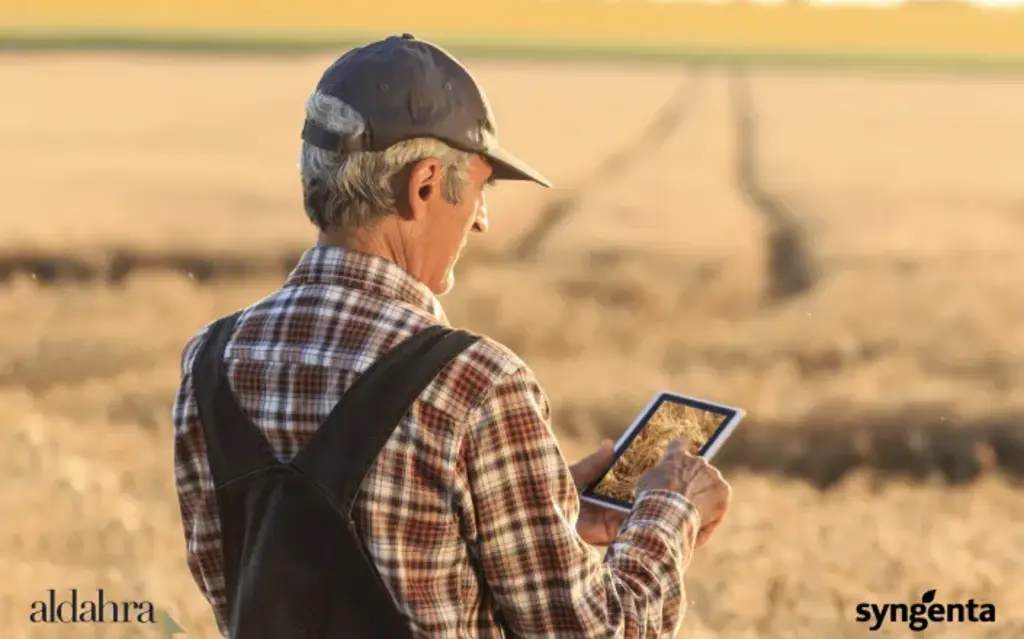Syngenta Group and Al Dahra have entered a strategic partnership that seeks to introduce digital farm management tools across hundreds of thousands of acres of farmland in Eastern Europe and North Africa. The agreement, formalized recently, involves the implementation of Syngenta’s Cropwise Operations platform across more than 220,000 acres of Al Dahra’s agricultural land located in Romania, Serbia, Egypt, and Morocco.
Both companies have cited a common objective: enhancing operational efficiency while maintaining long-term sustainability of large-scale farming systems. The collaboration is expected to help Al Dahra consolidate its vast data sets from different geographies, enabling its teams to make more informed and timely decisions in areas such as pest control, irrigation, and input use.
Context of the Partnership
The backdrop of this collaboration is a global agricultural sector increasingly turning to digital solutions. A report by consultancy McKinsey has estimated that enhanced connectivity in agriculture could contribute over $500 billion to the world’s GDP by the end of this decade. This forecast rests on the growing adoption of technologies such as drones, sensors, and data analytics that are helping farms better monitor and manage their resources.
Al Dahra is a multinational agrobusiness with a presence in more than 20 countries and active operations spanning six continents. The company manages approximately 400,000 acres of farmland, much of it irrigated and dedicated to producing feed and food crops. Syngenta, on the other hand, is known for its work in crop protection and seed science, and in recent years has placed growing emphasis on the role of digital technologies in modern agriculture.
What the Digital Integration Entails
The core of the agreement lies in the adoption of Syngenta’s Cropwise Operations platform, a digital management tool that combines agronomic, administrative, and financial functionalities into a single system. According to the companies, the system will be integrated with Al Dahra’s current technology infrastructure, allowing for a more unified approach to how farm data is collected, analyzed, and used.
One of the primary benefits anticipated from this integration is a shift toward centralized and real-time monitoring. Al Dahra’s farm managers across its locations will have access to information ranging from soil conditions and weather forecasts to crop health indicators and pest alerts. This level of insight is expected to help the company respond more quickly to emerging challenges in the field.
Cropwise Operations allows for detailed tracking and reporting, something that Al Dahra has reportedly been aiming to streamline further. It also includes functions such as variable rate application and predictive analysis, which are particularly relevant in contexts where water and nutrient management are critical.
Also Read: Gardin’s AI-Powered Sensor System Gains Traction Among Global Growers
Alignment with Operational Goals
Speaking on behalf of Syngenta, Feroz Sheikh, the Chief Information and Digital Officer, highlighted how data-driven decisions are becoming central to large-scale agricultural management.
Arnoud van den Berg, Al Dahra’s Group CEO, echoed this sentiment while explaining that the key focus for the company has been to minimize time spent on manual data entry while improving access to real-time insights that support day-to-day decision-making on the farm. The Cropwise platform is aligned with this vision by enabling more automated and structured reporting systems across the company’s diverse business units. According to van den Berg, moving toward a more digital infrastructure is also part of Al Dahra’s larger goal of maintaining consistency in standards, formats, and metrics across its wide-ranging agricultural operations.
Data Consolidation Across Regions
One of the challenges for multinational agribusinesses like Al Dahra is ensuring consistent practices across various regions that may have differing climates, soil types, and regulatory environments. The implementation of Cropwise Operations includes features that can help address these challenges through standardized templates and classification systems. This consolidation is expected to allow Al Dahra to generate comparable reports from different countries, which in turn can help in identifying trends, managing inputs more efficiently, and benchmarking performance across farms.
The use of real-time satellite monitoring, localized weather stations, and scouting tools also enables early detection of crop health issues. Managers can make quicker interventions if pests or diseases are detected, potentially avoiding larger-scale impacts later in the season.
Though still in the early stages, the partnership between Syngenta and Al Dahra reflects a growing interest within the agriculture sector in using digital platforms not only for efficiency but also for long-term sustainability. As both companies continue to integrate these tools into daily operations, the focus will likely shift toward evaluating results and identifying areas where further improvements can be made.
Cropwise Operations is currently used on about 70 million hectares globally, and the addition of Al Dahra’s acreage further expands its footprint. While it remains to be seen how the integration will evolve in the coming years, the current move represents a concerted step toward a more connected and structured approach to managing agricultural enterprises on a large scale.


